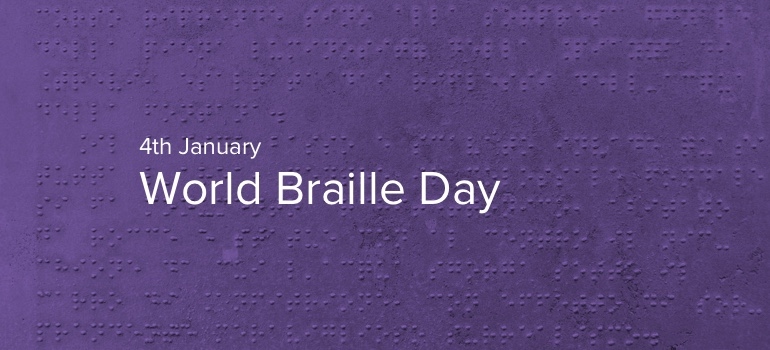On this day (January 4th) in 1809, Louis Braille was born.
You probably recognise his surname.
At a very young age, Louis lost his eyesight after an accident.
Braille's name is known around the world because of what he created; a written communication system for people with a visual impairment.
Braille's system remains to this day the prominent written communication system for blind and visually impaired individuals.
Today is World Braille Day, coinciding with the birthday of Braille's creator and intended to raise awareness of the importance of its invention for people around the world.
We do, of course, live in a very different world today.
Where once written word was consumed on printed paper, increasingly, written content is accessed online, via digital devices.
This is both a challenge and an opportunity for those who rely on accessibility features to take part.
It just so happens that this year's World Braille Day coincides with the imminent launch of an update to another accessibility movement of great importance; the Web Content Accessibility Guidelines (WCAG).
WCAG
WCAG is an initiative run by W3C (the World Wide Web Consortium).
It's nothing new. The original WCAG was launched in the mid-1990s.
WCAG 2.0 was launched in late 2008 and the current version is WCAG 2.1.
In essence, WCAG is a technical standard. It provides a framework for those looking to build digital tools (ie. websites and apps) with a set of guidelines to ensure that whatever they create remains accessible to all.
This means that content can be consumed by anyone, regardless of ability.
In a perfect world, all digital systems, websites and applications should conform to WCAG and provide an accessible experience.
Unfortunately, we don't live in a perfect world.
The public sector has done a relatively good job of ensuring that its services conform to WCAG. In the UK, public sector websites and applications are required to meet WCAG 2.1 AA level. This is the middle tier of the latest WCAG publication and for the most part, ensures services can be accessed by all.
In the private sector, certainly in my own experience, uptake is more patchy.
WCAG 2.2
I see this changing.
W3C is poised to publish the final version of its updated guidelines in early 2023 and organisations have a duty to take notice.
Whilst the public sector is obliged to follow the guidelines, rules applied to the private sector are more woolly.
It's time this changed and it's time all companies take an accessibility-first approach.
We'll be publishing guidance on the updated WCAG documentation soon.
So this year, on World Braille Day, think about embracing digital accessibility.





